BY STU BALE
New Product Development (NPD) has always been a part of what we do at Crucible.
In the recent years we worked on a wide variety of projects on both ends of the spectrum – from small / one man band / start up type things to some huge projects for big brands, like Cointreau. The beginning of each year is always a particularly fun time, as we tend to get start up projects in – big, new ideas fuelled by copious amounts of wine and cheese over the Christmas period. I feel that where Crucible sits in the drinks industry, we have a unique perspective and fill a niche due to our experience at both the front lines of hospitality, and within industrial beverage production.
“And that was when we first learnt about scalability…”
My initial foray into the NPD world was actually in 2011, and it was my very first project at Strange Hill. I had just recently left 69 Colebrooke Row, and at that time I was one of the few bartenders who actually knew how to distill stuff (times have definitely changed!). The project was called ‘Absolut Craft’ – it was a partnership between Absolut Vodka and Nick Strangeway. Together, they would dip their toes into the burgeoning craft spirit industry and make some small batch artisanal flavoured vodkas – as opposed to their usual mass produced ones.
This was the first time I had worked with Nick, and let’s say that it definitely wasn’t a gentle introduction into the chaos, ha… Anyways, his three concepts for ‘Absolut Craft’ were: a smoky one, a lemon one (without using any lemons) and a bitter one (kind of as an alternative to Campari). I still have the original spreadsheet of the R&D phase for this project, and I’m probably still slightly scarred… We had 2 or 3 stills running all day, 5 days a week, for 3 or 4 months – in total we made over 500 samples – it was loads of distillates from different botanicals at different concentrations, macerated for different lengths of time. At the end of every week, Nick and I would sit down and taste the results: we’d note what was good, what was bad and we’d make a plan for the next week. It was a real rollercoaster – we tasted a lot of truly awful distillates, but also lots of weird and wonderful things.
Distillation is really quite a magical thing – every time I do a run on the still, I am always struck by the fact that without this elemental process, I wouldn’t have a job – in fact, the whole drinks industry, as we know it, wouldn’t really exist. When I worked on ‘Absolut Craft’, being able to observe how all of these different botanicals behaved in the process and how particular flavours reacted to being boiled in alcohol, was fascinating. There aren’t really any books that give you distillation specifics – for example, how many grams of lemon thyme to put into a specific volume of alcohol at a specific ABV and how many minutes of distillation will give you the best and brightest lemon thyme flavour. For example – for distillation of the smoky flavour, the smokiness only really comes out right at the end of the run: if you push it too far, the botanicals burn and it produces a whole different and wrong smoky profile – it’s nasty. Bitterness doesn’t distill, as we discovered back then, so we had to look at macerates for that aspect and layer the top notes with distillates.
When we were getting closer to the deadline of the ‘Absolut Craft’ project, I would do the distillates in the daytime and Nick would spend the nights blending them together to try and make the final product. Every morning when I got in, Nick would be where I left him the night before and he would have new instructions for distillates to run on that day – all to get it just right. As I said – wild times, ha!
Now, bear in mind that this whole process was all done on a bench top scale. We had these ridiculously complicated, meticulous & delicious recipes – each one could have been a blend of 10 different distillates and a few macerates. So when it was time to share those recipes with the big boys at the Absolut distillery, they had a fucking fit, ha…
And that was when we first learnt about scalability: how ingredients react in larger quantities, how they go through different shaped stills made of different materials, and distillation is affected by different atmospheric environments – this pivot wasn’t far off from starting the ‘Absolute Craft’ project from scratch, to be honest.. The project moved into a second phase of development, which took at least as long as the initial phase and involved many trips to the distillery – it was a painstaking experience, but also a great learning curve for both Nick and I.
Silent Pool Black Juniper
In 2017, shortly after I had set up Crucible, I was employed by the Silent Pool Distillery to look after the creative aspect of their operation. The role was mainly focused on new gin recipes – seasonal variants, like sloe gin, but there was also a fair chunk of work devoted to making liqueurs, both for the on trade but also to sell in the Silent Pool distillery shop, which did quite a roaring trade.
Probably my favourite product that I made for Silent Pool was the Black Juniper Gin. The concept of this variant came from a consignment of this super rare ‘black juniper’, ordered with the sole purpose of creating something special. This black juniper came from Bhutan – it was hand harvested from wild bushes, growing 4000m above sea level in the Himalayas, or something crazy like that. Each year, there is only a tiny amount of these rare berries available and because of the harsh conditions they grow in, they have a really unique taste. The brief was to create a luxurious recipe that would not only do justice to where the juniper had come from, but also to match the packaging that had already been designed for it!
As a starting point, I knew that Henrietta Lovell, Rare Tea Lady, had some special teas that only grew at high altitudes – I thought it would be a nice tie in, and her gear is always delicious. So when I got in touch with her, she suggested a cherry blossom, which came from a supplier in Nepal that only grows 2kg of blossoms per year. Again, this seemed just too good not to use.
As the rest of the recipe was coming together, I was doing further research into where the juniper came from and I read about a ritual the pickers performed before they harvested the plant – they would burn incense to purify themselves. As you may have read in my previous ramblings, I have a fascination with perfume and I thought it would be great to incorporate Oudh or Agarwood into the recipe – this is when I decided to smoke the juniper with agarwood. As the berries are quite oily, they can absorb smoky flavours without turning ashy – the agarwood gave the black juniper berries this kind of ethereal, otherworldly seductive flavour. It’s really quite hard to describe but it just entices you into drinking it.
In the final recipe, once the smoked juniper is distilled with the rest of the botanicals the spirit is rested on agarwood for a couple of months to really smooth out the edges and marry the whole experience together. Very proud of that one, and it goes for £300 a bottle, I believe!
The birth of EasyMixt
Around the same time, as the Silent Pool project, I was also working on an education piece for Funkin. It was all about how different sugars and acids present themselves in their purées and how they affect the overall flavour of the drink – for example, how fructose makes things taste different from sucrose, and how differently different acids taste. It’s quite marginal but when you understand all of these subtle nuances, and are able to control them accurately, it can really make you consider how to put together a complete recipe.
Achieving the balance between sweetness and acidity is the most difficult part of making drinks, or perhaps the bit that most people fuck up. If you get that balance right, you are most of the way where you need to be. I figured if I created a range of ‘balancing’ liqueurs, they would make putting together better quality cocktails easier and more accessible for anyone.
So I made 3 of these already balanced liqueur prototypes at around 15% ABV: first with sucrose & citric acid, second with fructose & malic acid and third with maltose & lactic acid – a range of functional liqueurs if you will. This is when I decided I would call them ‘Funktional Liqueurs’: Funktion 1, Funktion 2 and Funktion 3. I figured since I wouldn’t be able to afford a Funktion One sound system anytime soon, a cease and desist from them would be the next best thing.
The ‘Funktional Liqueurs’ made putting together great cocktails very easy but when I was showing them to people, it became clear that they were more of a bartender niche product, not designed for a mass market. This made them not accessible which was essential and the whole fucking point was to make putting cocktails together easier for anyone!
The idea evolved and sadly, I said goodbye to the name. The new iteration was to be called ‘BALANCE’. Simple. Elegant. It was a blend of different acids and sugars to make the best of all worlds but with a neutral flavour. Each bottle would come with – or you could buy as an add on (never really got that far) – a range of concentrated flavour drops, so that you could turn your neutral ‘BALANCE’ liqueur into whatever flavour you like – no more need for hunners of dusty bottles clogging up the back bar or your home bar. All in one. Bang. Winner. Apparently not… Again, when I started testing this on people, the overwhelming feedback was that this was a proper full force bartender wank – looking back, fair enough.
So we went back to the drawing board again. I had to really think about what the purpose of this liqueur was – who was it for and how they would be using it. I realised that realistically, it had to be a one bottle pour that should be versatile enough to mix with all spirits. I kept the same blend of sugars and acids from ‘BALANCE’, mixed in some citrus distillates: lime, lemon, pink grapefruit and mandarin; added some quassia macerate for bitterness and some salt for a bit of je ne sais quoi.. I remember the first Sidecar I made with equal parts of cognac and this new iteration of ‘BALANCE’ – it was fucking delicious and I was over the moon.
When it came to the name, I settled on ‘EasyMixt’ – kind of like Ronseal – it does what it says on the tin. Pretty sure I’m still not totally convinced on the name but then again I’ve never really liked naming drinks.. My biggest cheat for naming drinks on cocktail menus, that I used for the last 10 years, has been the Racing Post paper (and now the website) – horses have great names, ha!
At the end of the day, EasyMixt is a really fantastic product – whether in a bar or in your home, it can help you create high quality cocktails without the need to worry about the balance. EasyMixt is being distributed by the team at 10 Locks and they have done a great job of helping to get it out there – with little to no marketing budget from me, as sadly I just don’t have that kind of money lying around (yet). That being said, year on year sales increased from 2023 to 2024 by 100% and 2025 is already looking better again – if you’re reading this and want to invest in some marketing…
Anyways, developing new products is a complex and nuanced art and I fucking love it. So, if you have a wild idea you need out of your head and onto a shelf, give us a shout!
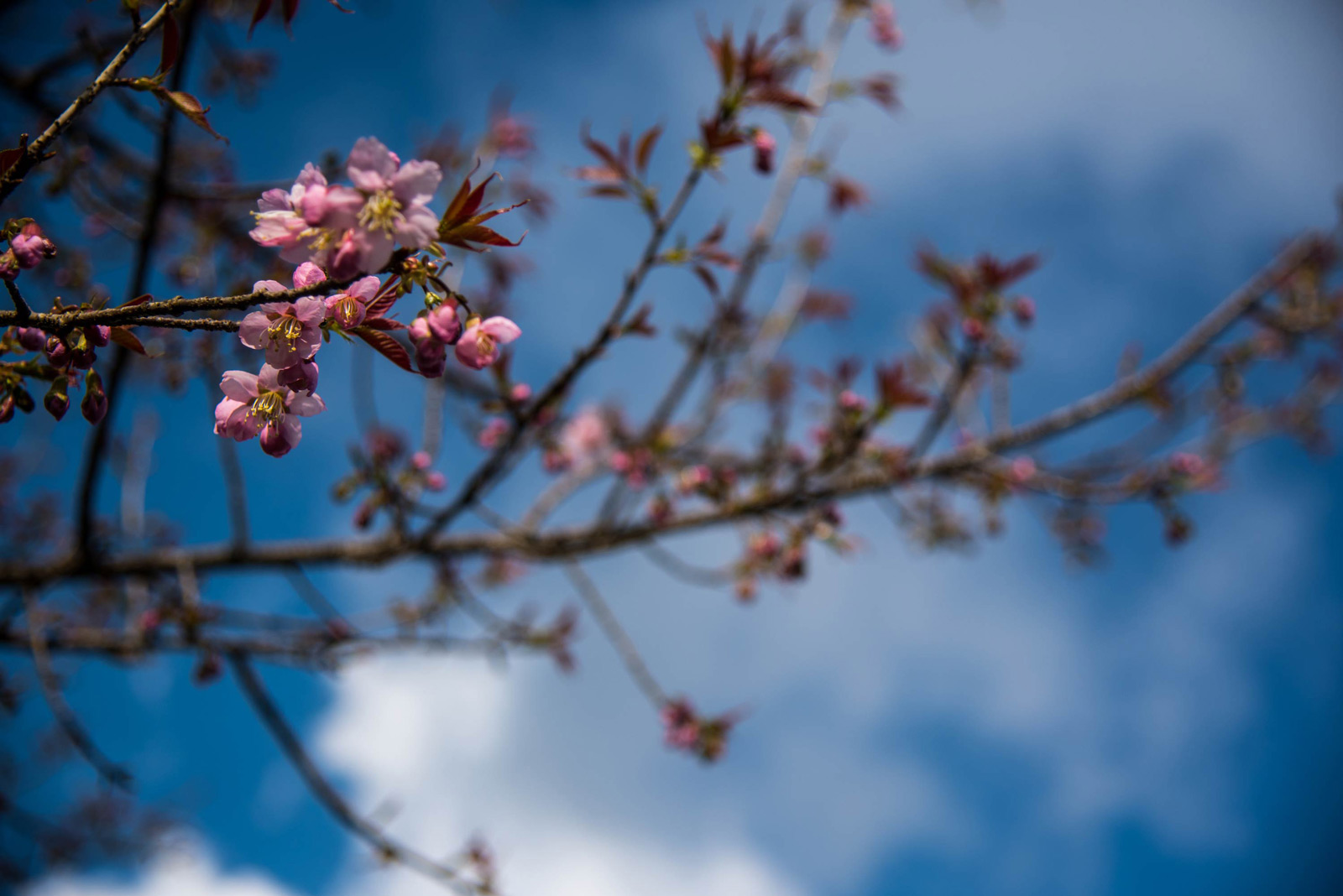
The Nepalese Cherry blossoms
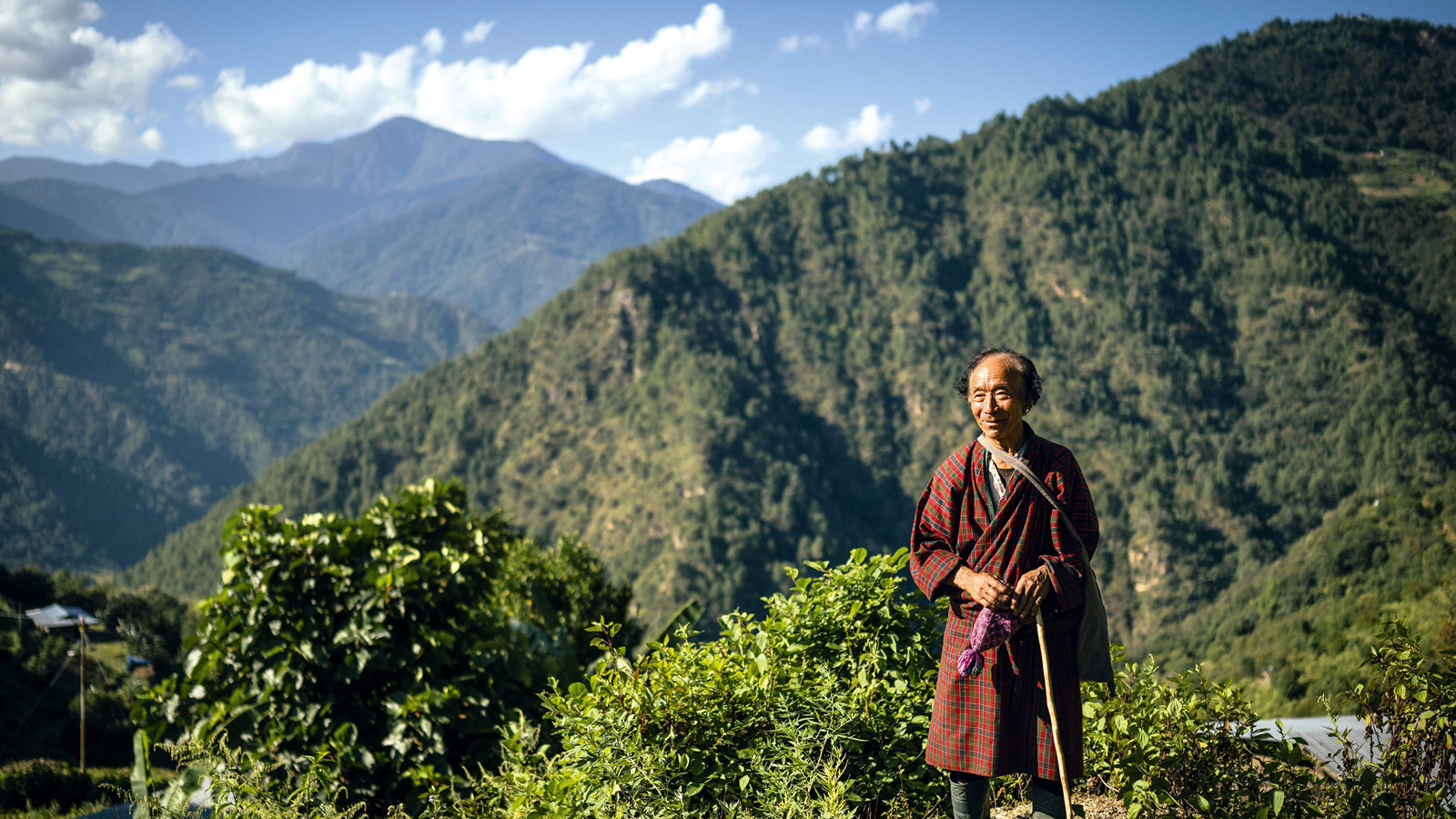
Bhutan: where black juniper is grown and harvested
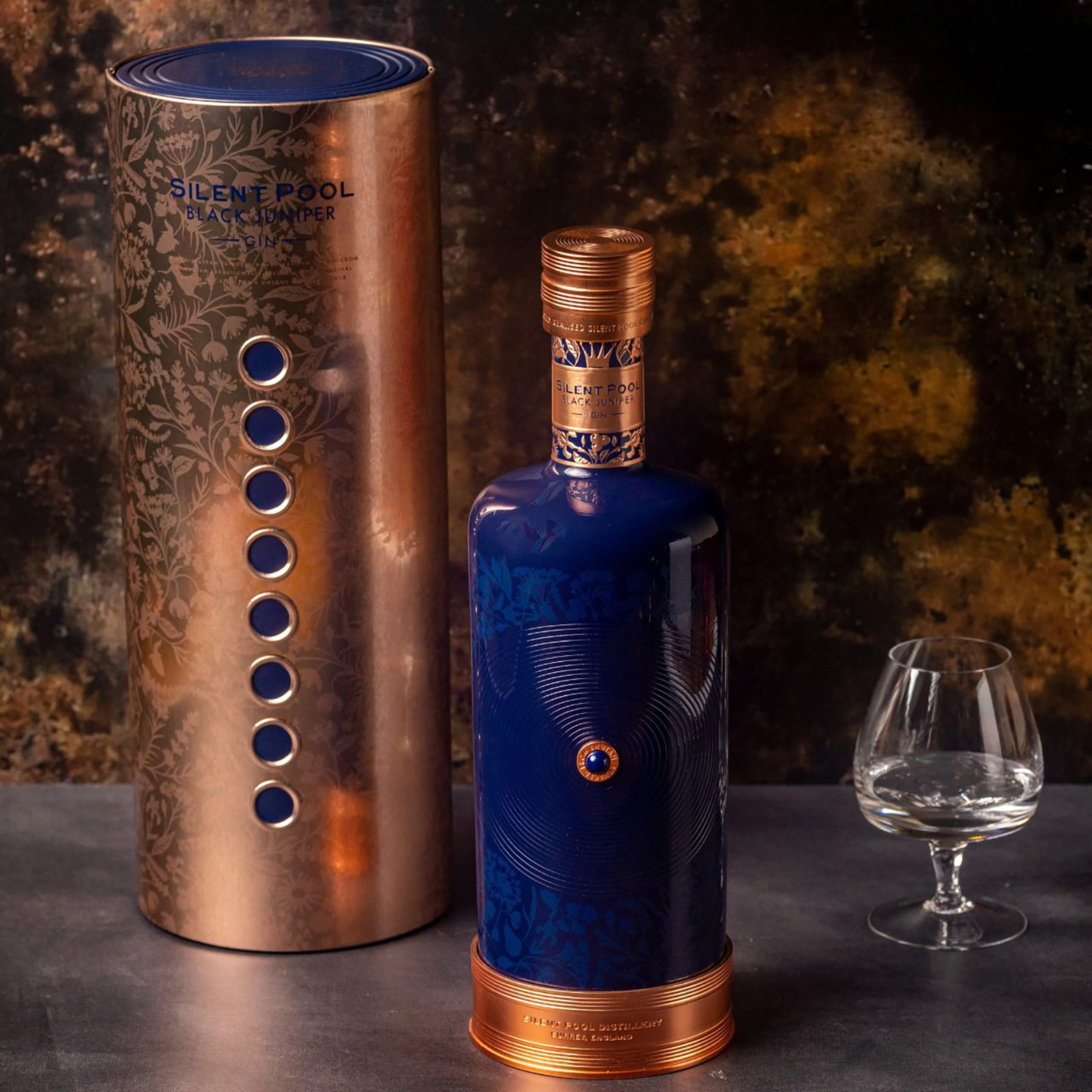
Silent Pool Black Juniper
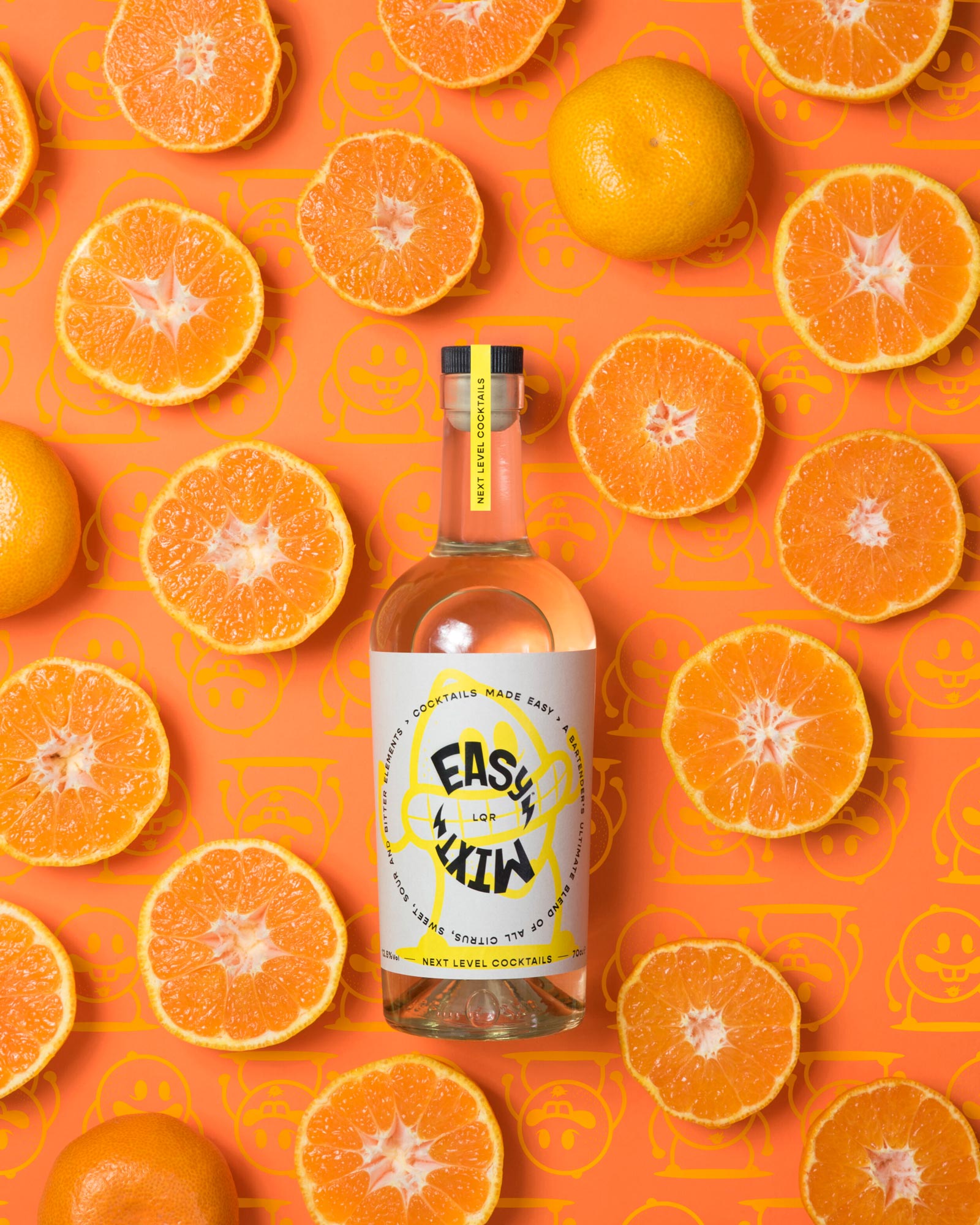
NPD=New Product Development
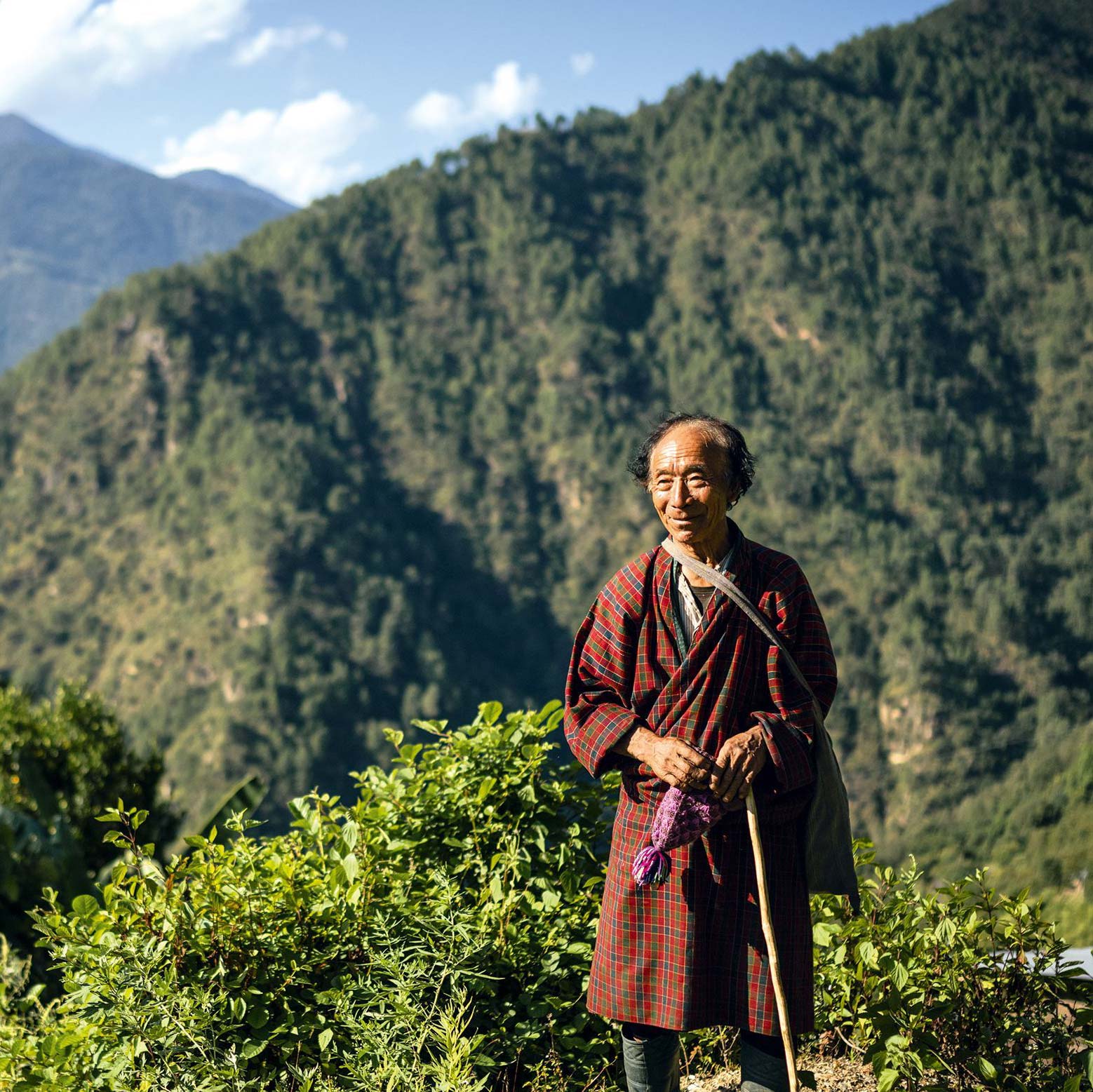
BY STU BALE
New Product Development (NPD) has always been a part of what we do at Crucible.
In the recent years we worked on a wide variety of projects on both ends of the spectrum – from small / one man band / start up type things to some huge projects for big brands, like Cointreau. The beginning of each year is always a particularly fun time, as we tend to get start up projects in – big, new ideas fuelled by copious amounts of wine and cheese over the Christmas period. I feel that where Crucible sits in the drinks industry, we have a unique perspective and fill a niche due to our experience at both the front lines of hospitality, and within industrial beverage production.
“And that was when we first learnt about scalability…”
My initial foray into the NPD world was actually in 2011, and it was my very first project at Strange Hill. I had just recently left 69 Colebrooke Row, and at that time I was one of the few bartenders who actually knew how to distill stuff (times have definitely changed!). The project was called ‘Absolut Craft’ – it was a partnership between Absolut Vodka and Nick Strangeway. Together, they would dip their toes into the burgeoning craft spirit industry and make some small batch artisanal flavoured vodkas – as opposed to their usual mass produced ones.
This was the first time I had worked with Nick, and let’s say that it definitely wasn’t a gentle introduction into the chaos, ha… Anyways, his three concepts for ‘Absolut Craft’ were: a smoky one, a lemon one (without using any lemons) and a bitter one (kind of as an alternative to Campari). I still have the original spreadsheet of the R&D phase for this project, and I’m probably still slightly scarred… We had 2 or 3 stills running all day, 5 days a week, for 3 or 4 months – in total we made over 500 samples – it was loads of distillates from different botanicals at different concentrations, macerated for different lengths of time. At the end of every week, Nick and I would sit down and taste the results: we’d note what was good, what was bad and we’d make a plan for the next week. It was a real rollercoaster – we tasted a lot of truly awful distillates, but also lots of weird and wonderful things.
Distillation is really quite a magical thing – every time I do a run on the still, I am always struck by the fact that without this elemental process, I wouldn’t have a job – in fact, the whole drinks industry, as we know it, wouldn’t really exist. When I worked on ‘Absolut Craft’, being able to observe how all of these different botanicals behaved in the process and how particular flavours reacted to being boiled in alcohol, was fascinating. There aren’t really any books that give you distillation specifics – for example, how many grams of lemon thyme to put into a specific volume of alcohol at a specific ABV and how many minutes of distillation will give you the best and brightest lemon thyme flavour. For example – for distillation of the smoky flavour, the smokiness only really comes out right at the end of the run: if you push it too far, the botanicals burn and it produces a whole different and wrong smoky profile – it’s nasty. Bitterness doesn’t distill, as we discovered back then, so we had to look at macerates for that aspect and layer the top notes with distillates.
When we were getting closer to the deadline of the ‘Absolut Craft’ project, I would do the distillates in the daytime and Nick would spend the nights blending them together to try and make the final product. Every morning when I got in, Nick would be where I left him the night before and he would have new instructions for distillates to run on that day – all to get it just right. As I said – wild times, ha!
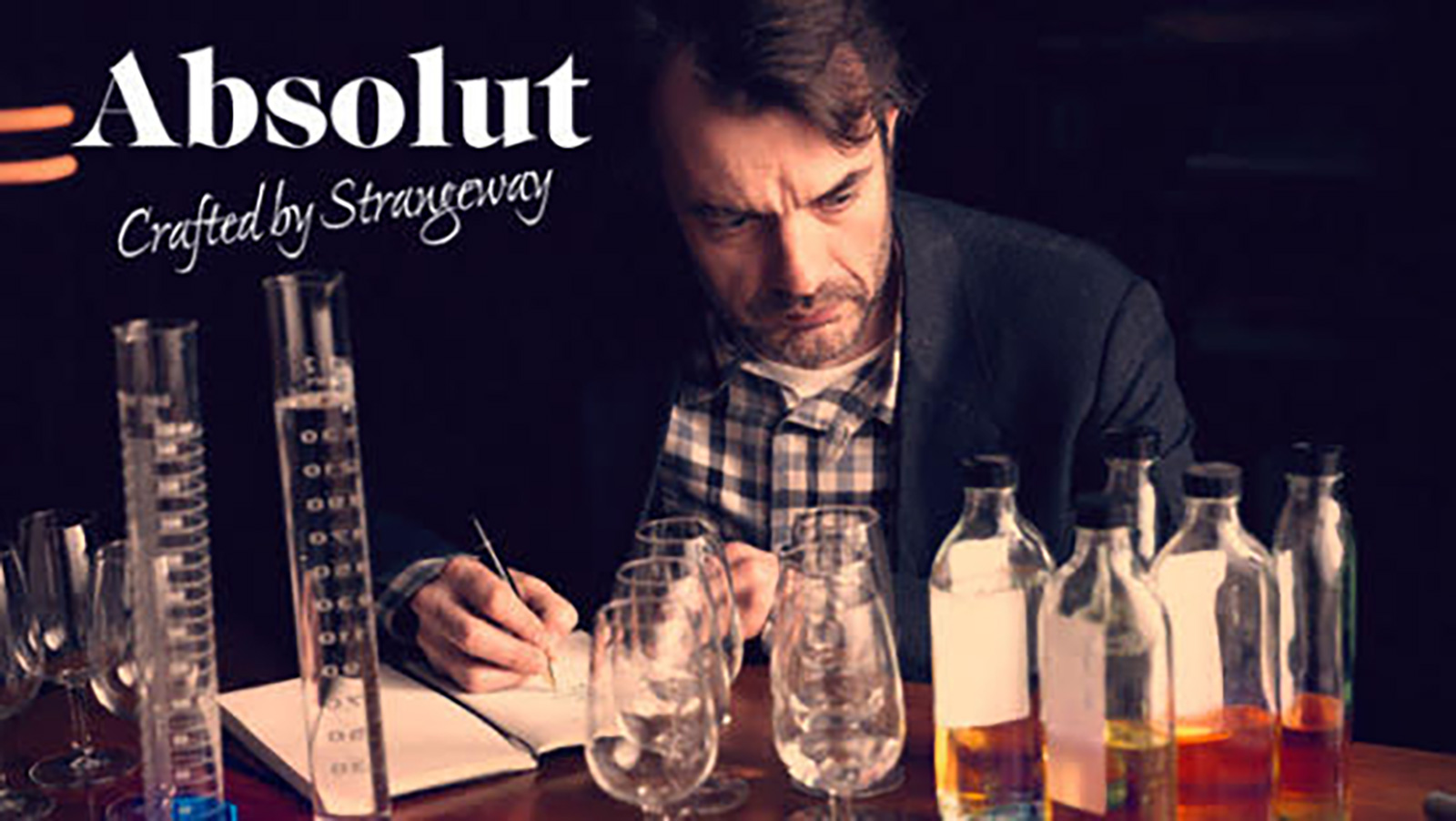
Developing Absolut Craft: Nick Strangeway after a night of tasting distillates
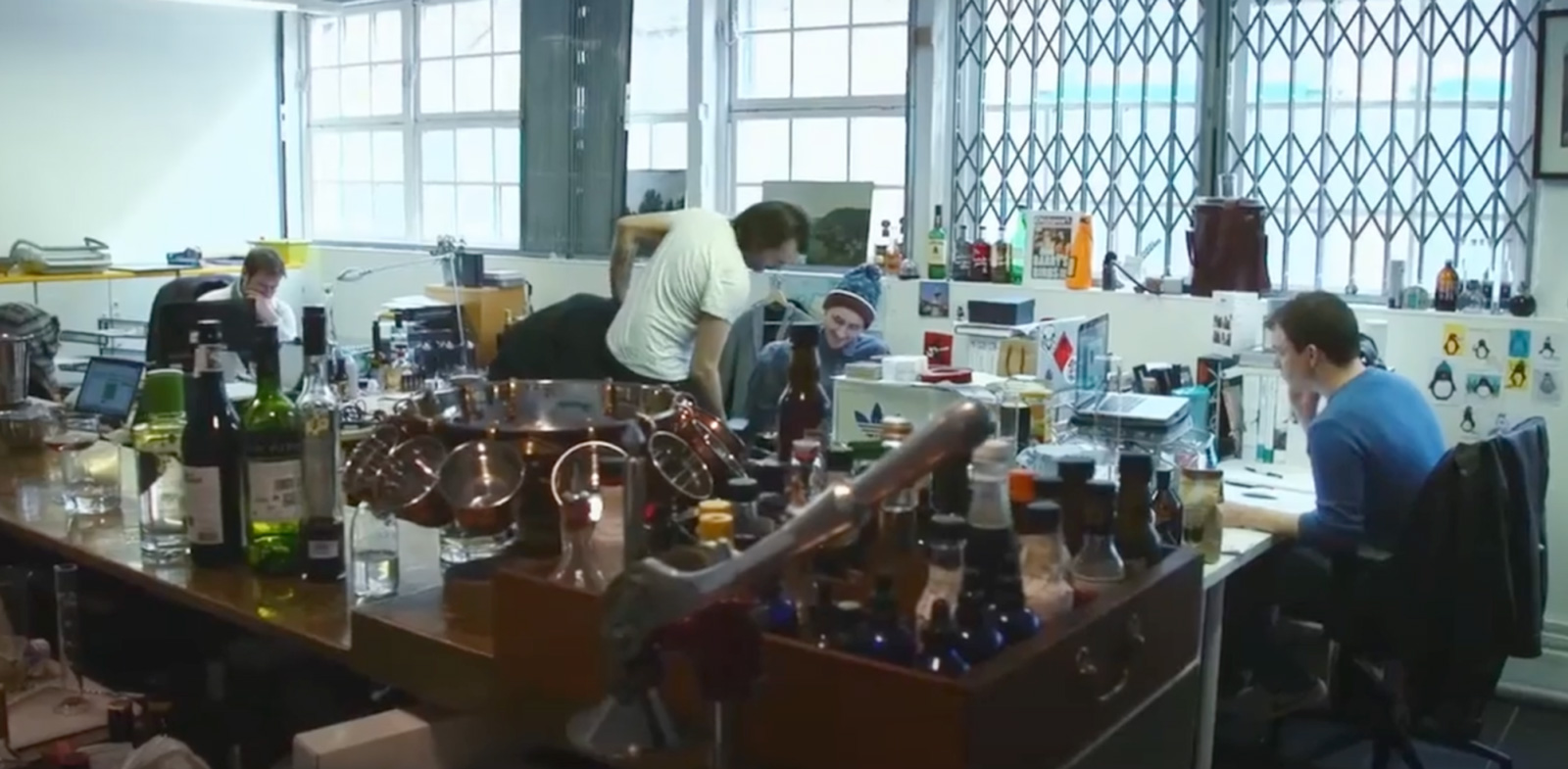
Nick Strangeway & Stu Bale in the Strange Hill office
Now, bear in mind that this whole process was all done on a bench top scale. We had these ridiculously complicated, meticulous & delicious recipes – each one could have been a blend of 10 different distillates and a few macerates. So when it was time to share those recipes with the big boys at the Absolut distillery, they had a fucking fit, ha…
And that was when we first learnt about scalability: how ingredients react in larger quantities, how they go through different shaped stills made of different materials, and distillation is affected by different atmospheric environments – this pivot wasn’t far off from starting the ‘Absolute Craft’ project from scratch, to be honest.. The project moved into a second phase of development, which took at least as long as the initial phase and involved many trips to the distillery – it was a painstaking experience, but also a great learning curve for both Nick and I.
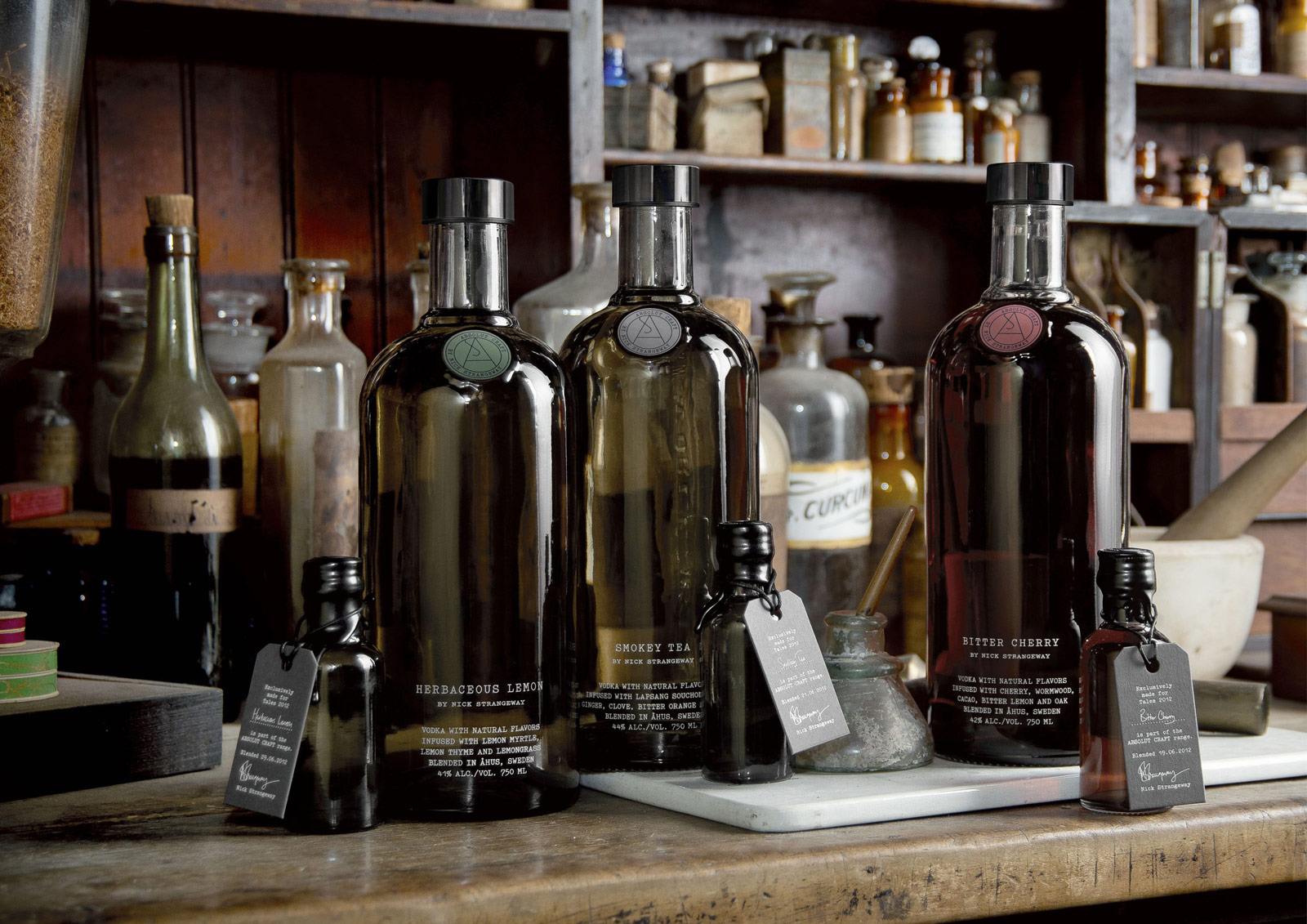
Absolut Craft: the finished products
Silent Pool Black Juniper
In 2017, shortly after I had set up Crucible, I was employed by the Silent Pool Distillery to look after the creative aspect of their operation. The role was mainly focused on new gin recipes – seasonal variants, like sloe gin, but there was also a fair chunk of work devoted to making liqueurs, both for the on trade but also to sell in the Silent Pool distillery shop, which did quite a roaring trade.
Probably my favourite product that I made for Silent Pool was the Black Juniper Gin. The concept of this variant came from a consignment of this super rare ‘black juniper’, ordered with the sole purpose of creating something special. This black juniper came from Bhutan – it was hand harvested from wild bushes, growing 4000m above sea level in the Himalayas, or something crazy like that. Each year, there is only a tiny amount of these rare berries available and because of the harsh conditions they grow in, they have a really unique taste. The brief was to create a luxurious recipe that would not only do justice to where the juniper had come from, but also to match the packaging that had already been designed for it!
As a starting point, I knew that Henrietta Lovell, Rare Tea Lady, had some special teas that only grew at high altitudes – I thought it would be a nice tie in, and her gear is always delicious. So when I got in touch with her, she suggested a cherry blossom, which came from a supplier in Nepal that only grows 2kg of blossoms per year. Again, this seemed just too good not to use.
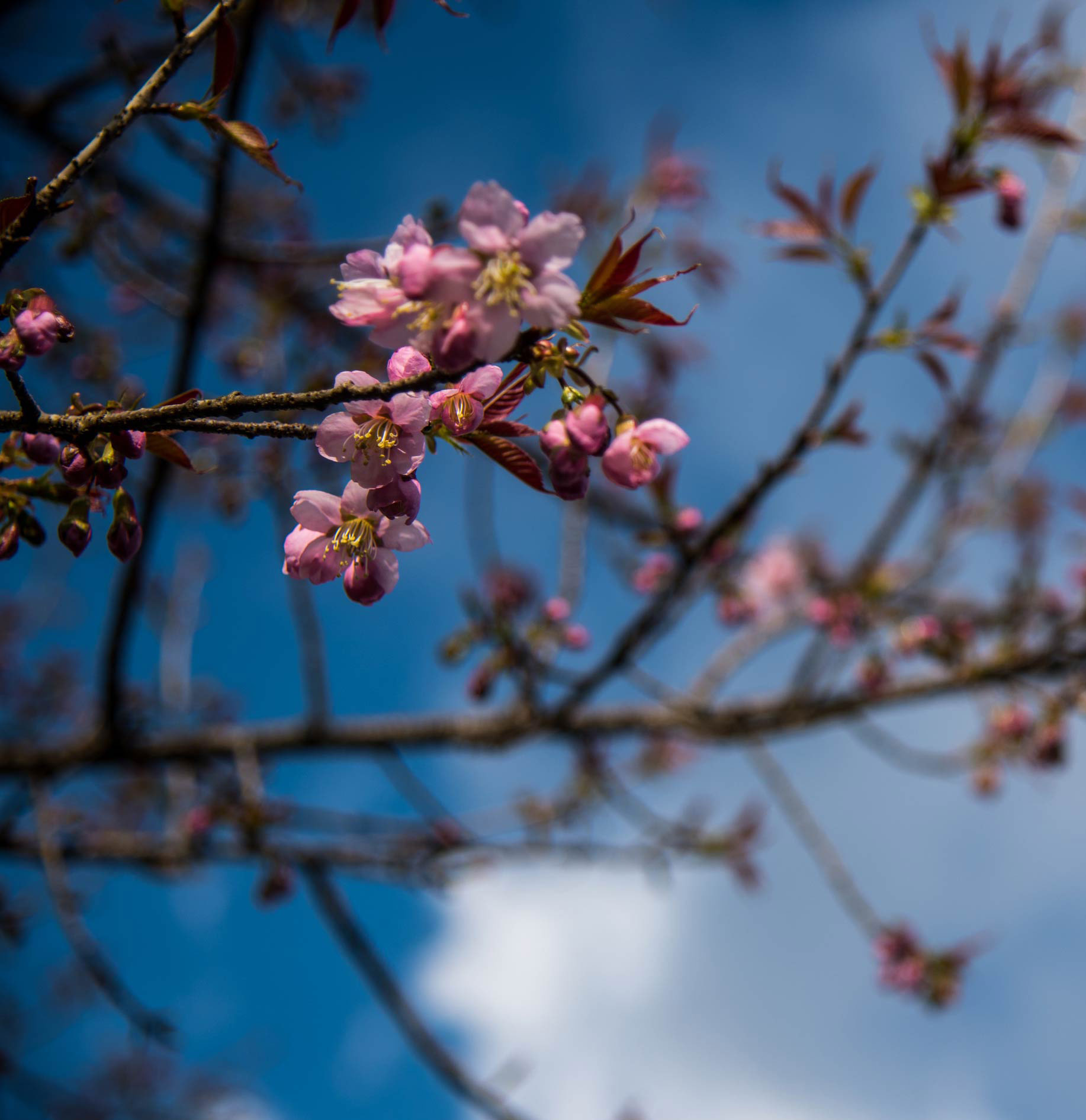
The Nepalese Cherry blossoms

Bhutan: where black juniper is grown and harvested
As the rest of the recipe was coming together, I was doing further research into where the juniper came from and I read about a ritual the pickers performed before they harvested the plant – they would burn incense to purify themselves. As you may have read in my previous ramblings, I have a fascination with perfume and I thought it would be great to incorporate Oudh or Agarwood into the recipe – this is when I decided to smoke the juniper with agarwood. As the berries are quite oily, they can absorb smoky flavours without turning ashy – the agarwood gave the black juniper berries this kind of ethereal, otherworldly seductive flavour. It’s really quite hard to describe but it just entices you into drinking it.
In the final recipe, once the smoked juniper is distilled with the rest of the botanicals the spirit is rested on agarwood for a couple of months to really smooth out the edges and marry the whole experience together. Very proud of that one, and it goes for £300 a bottle, I believe!

Silent Pool Black Juniper
The birth of EasyMixt
Around the same time, as the Silent Pool project, I was also working on an education piece for Funkin. It was all about how different sugars and acids present themselves in their purées and how they affect the overall flavour of the drink – for example, how fructose makes things taste different from sucrose, and how differently different acids taste. It’s quite marginal but when you understand all of these subtle nuances, and are able to control them accurately, it can really make you consider how to put together a complete recipe.
Achieving the balance between sweetness and acidity is the most difficult part of making drinks, or perhaps the bit that most people fuck up. If you get that balance right, you are most of the way where you need to be. I figured if I created a range of ‘balancing’ liqueurs, they would make putting together better quality cocktails easier and more accessible for anyone.
So I made 3 of these already balanced liqueur prototypes at around 15% ABV: first with sucrose & citric acid, second with fructose & malic acid and third with maltose & lactic acid – a range of functional liqueurs if you will. This is when I decided I would call them ‘Funktional Liqueurs’: Funktion 1, Funktion 2 and Funktion 3. I figured since I wouldn’t be able to afford a Funktion One sound system anytime soon, a cease and desist from them would be the next best thing.
The ‘Funktional Liqueurs’ made putting together great cocktails very easy but when I was showing them to people, it became clear that they were more of a bartender niche product, not designed for a mass market. This made them not accessible which was essential and the whole fucking point was to make putting cocktails together easier for anyone!
The idea evolved and sadly, I said goodbye to the name. The new iteration was to be called ‘BALANCE’. Simple. Elegant. It was a blend of different acids and sugars to make the best of all worlds but with a neutral flavour. Each bottle would come with – or you could buy as an add on (never really got that far) – a range of concentrated flavour drops, so that you could turn your neutral ‘BALANCE’ liqueur into whatever flavour you like – no more need for hunners of dusty bottles clogging up the back bar or your home bar. All in one. Bang. Winner. Apparently not… Again, when I started testing this on people, the overwhelming feedback was that this was a proper full force bartender wank – looking back, fair enough.
So we went back to the drawing board again. I had to really think about what the purpose of this liqueur was – who was it for and how they would be using it. I realised that realistically, it had to be a one bottle pour that should be versatile enough to mix with all spirits. I kept the same blend of sugars and acids from ‘BALANCE’, mixed in some citrus distillates: lime, lemon, pink grapefruit and mandarin; added some quassia macerate for bitterness and some salt for a bit of je ne sais quoi.. I remember the first Sidecar I made with equal parts of cognac and this new iteration of ‘BALANCE’ – it was fucking delicious and I was over the moon.
When it came to the name, I settled on ‘EasyMixt’ – kind of like Ronseal – it does what it says on the tin. Pretty sure I’m still not totally convinced on the name but then again I’ve never really liked naming drinks.. My biggest cheat for naming drinks on cocktail menus, that I used for the last 10 years, has been the Racing Post paper (and now the website) – horses have great names, ha!

At the end of the day, EasyMixt is a really fantastic product – whether in a bar or in your home, it can help you create high quality cocktails without the need to worry about the balance. EasyMixt is being distributed by the team at 10 Locks and they have done a great job of helping to get it out there – with little to no marketing budget from me, as sadly I just don’t have that kind of money lying around (yet). That being said, year on year sales increased from 2023 to 2024 by 100% and 2025 is already looking better again – if you’re reading this and want to invest in some marketing…
Anyways, developing new products is a complex and nuanced art and I fucking love it. So, if you have a wild idea you need out of your head and onto a shelf, give us a shout!